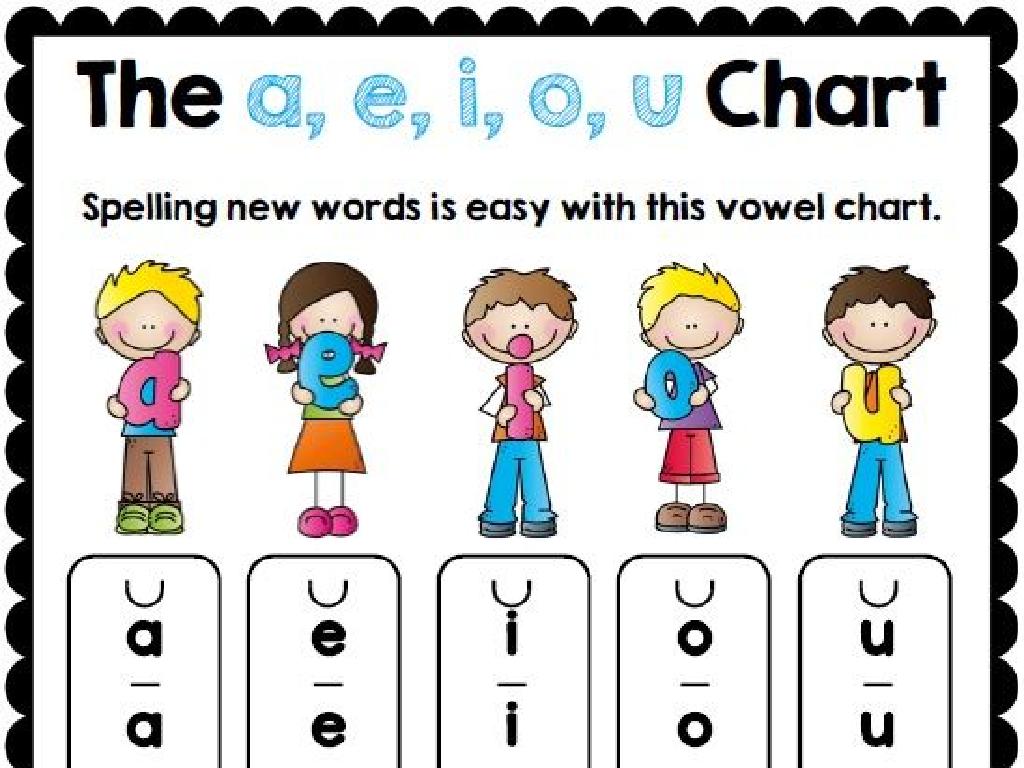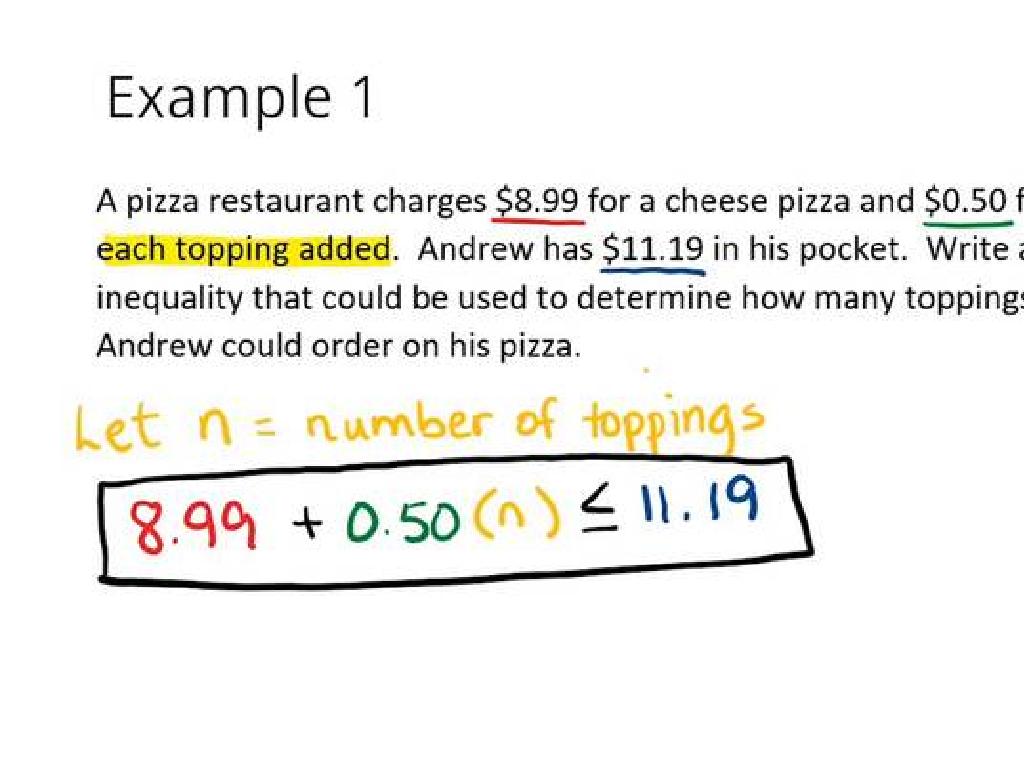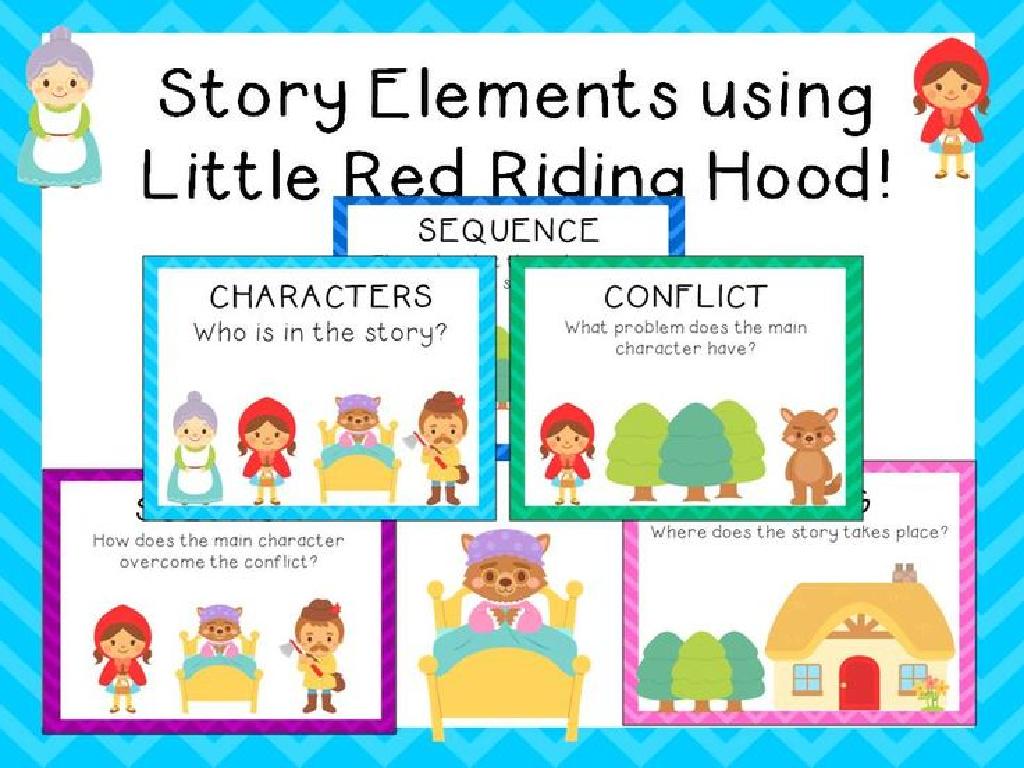Abbreviate Time, Length, And Speed Units
Subject: Science
Grade: Fifth grade
Topic: Units And Measurement
Please LOG IN to download the presentation. Access is available to registered users only.
View More Content
Understanding Units of Measurement
– What are units of measurement?
– Units are standards for expressing and comparing quantities.
– Importance of measuring
– Measurements let us organize and understand the world.
– Common units: time, length, speed
– Seconds (s), meters (m), miles per hour (mph)
– Abbreviating measurement units
– Learn to write units in short form, like hr for hour.
|
This slide introduces the concept of units of measurement, which are standardized quantities used to express and compare different aspects of the world around us. Emphasize the importance of measuring time, length, and speed in everyday life, such as knowing how long to cook food, how far to travel, or how fast to drive. Introduce common units like seconds for time, meters for length, and miles per hour for speed. Teach students the abbreviations for these units and explain that using abbreviations makes it easier to read and write measurements. Encourage students to practice abbreviating units and to recognize these abbreviations in their daily lives.
Abbreviating Time Units
– Time units: seconds, minutes, hours
– Abbreviations: s, min, h
– ‘s’ for seconds, ‘min’ for minutes, ‘h’ for hours
– Convert 120s to minutes
– 120 seconds is equal to 2 minutes
– Practice with time conversion
– Try converting 300 seconds to minutes
|
This slide introduces students to the standard abbreviations for time units, which are crucial for science and everyday life. Start by explaining the basic units of time: seconds, minutes, and hours. Then, show students how to abbreviate each unit and use these in writing and calculations. Provide an example of converting seconds to minutes to illustrate the concept. Encourage students to practice by converting different time measurements, such as 300 seconds to minutes, to reinforce their understanding. This exercise will help them become familiar with time units and prepare them for more complex concepts in science.
Abbreviating Length Units
– Common length units: mm, cm, m, km
– Abbreviations: mm, cm, m, km
– Understanding conversions
– Learn how to convert between units, like cm to m
– Practice with examples
– Example: 100 cm equals 1 m, 1000 m equals 1 km
|
This slide introduces students to the standard units of length measurement and their abbreviations. Emphasize the importance of knowing these abbreviations as they are commonly used in science and everyday life. Explain that millimeters (mm) are the smallest common unit in this list, followed by centimeters (cm), meters (m), and kilometers (km), which is the largest. Highlight the progression from one unit to the next and ensure students understand how to convert between units by using the examples provided. Encourage students to practice by measuring objects around the classroom or at home and converting those measurements into different units.
Speed Units: Abbreviations and Conversions
– Common speed units: m/s and km/h
– Meters per second (m/s), kilometers per hour (km/h)
– Abbreviating and converting units
– Use abbreviations for quick reference, learn conversion methods
– Example: Car traveling 100 km/h
– A car covers 100 km in 1 hour, so its speed is 100 kilometers per hour (km/h)
|
This slide introduces students to the common units used to measure speed, focusing on meters per second and kilometers per hour. Emphasize the importance of abbreviating units for ease of communication and calculation. Teach students the basic conversions between these units. Use the example of a car’s speed to illustrate how to calculate and express speed in kilometers per hour. Encourage students to think of other examples where speed is measured and to practice converting between different units of speed.
Practical Examples: Abbreviating Units
– Everyday measurements
– Time (sec, min, hr), length (in, ft, yd, mi), speed (mph, fps)
– Using abbreviations
– Convert ‘seconds’ to ‘sec’, ‘miles’ to ‘mi’, ‘feet per second’ to ‘fps’
– Student Q&A interaction
– Practice with examples
– How would you abbreviate ‘hours’ and ‘meters’?
|
This slide aims to connect students with the concept of abbreviating units of time, length, and speed through practical examples. Start by discussing everyday situations where these measurements are used, such as cooking (time), measuring height (length), or driving (speed). Explain how using abbreviations like ‘min’ for minutes or ‘km’ for kilometers can make writing and communication more efficient. Engage the class with an interactive Q&A, prompting them to provide examples of measurements and how they would abbreviate them. This will help assess their understanding and give them practical experience. Conclude with practice examples, asking students to convert full unit names to their abbreviations, reinforcing their learning.
Class Activity: Measure and Abbreviate!
– Measure objects’ length
– Record activity times
– Calculate ball’s speed
– Use distance and time to find speed, then write as mph or m/s
– Practice unit abbreviation
– Abbreviate inches to in, feet to ft, seconds to s, and minutes to min
|
This interactive class activity is designed to help students understand and practice abbreviating units of measurement. Provide a variety of objects for students to measure the length, using rulers or tape measures, and then have them write the measurements with proper abbreviations. Use stopwatches to record the time it takes to perform certain activities, such as running a short distance or completing a puzzle, and abbreviate the units of time. For the speed calculation, have students roll a ball over a known distance and time it. They will then calculate the speed using the formula speed = distance/time and abbreviate the units appropriately. Possible activities include measuring classroom items, timing sprints, or relay races, and rolling balls down inclined planes. Encourage students to share their results and discuss the importance of using standardized units and abbreviations in science.
Conclusion: Units and Measurement
– Importance of unit abbreviations
– Units like seconds (s), meters (m), and miles per hour (mph) help us communicate clearly.
– Converting between units
– Use multiplication or division to switch between units, like hours to minutes.
– Practice conversion skills
– Try converting with fun worksheets or online games.
– Keep practicing at home!
|
As we wrap up, remember that understanding units and their abbreviations is crucial for clear communication in science and everyday life. We’ve learned how to convert between different units of time, length, and speed, which is a skill that will help you in many real-world situations. Keep practicing these conversions to become more comfortable with them. Encourage students to practice at home with real-life examples, such as timing a race or measuring ingredients for a recipe, to reinforce their learning.
Homework: Units in Daily Life
– Complete unit conversion worksheet
– Create a presentation on daily measurements
– How do you use units like inches or minutes at home?
– Reflect on measurement importance
– Why is measuring accurately important in everyday activities?
– Discuss findings in the next class
|
This homework assignment is designed to reinforce the students’ understanding of units of measurement and their abbreviations. The worksheet will provide practice on converting between different units, such as from inches to centimeters or minutes to hours. Students are also tasked with creating a short presentation on how they use measurement in their daily lives, which could include cooking, sports, or travel. This will help them realize the practical applications of what they learn in class. In the next session, students will discuss their findings, allowing them to learn from each other’s experiences and perspectives on the use of measurement in various aspects of life. Encourage creativity in their presentations and ensure they understand the significance of accurate measurement.






